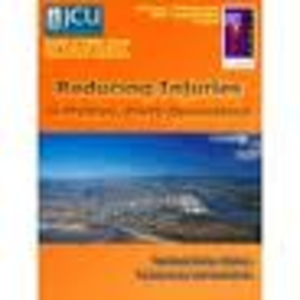Patterns and causes of injuries during organised sporting activities in the Mackay region (North Queensland) 1998-2000
Carter, Anthony, and Muller, Reinhold (2002) Patterns and causes of injuries during organised sporting activities in the Mackay region (North Queensland) 1998-2000. In: Muller, Reinhold, (ed.) Reducing Injuries in Mackay, North Queensland. Warwick Educational Publishing, Warwick, QLD, Australia, pp. 95-113.
|
PDF (Published Version)
- Published Version
Restricted to Repository staff only |
||
![[img]](https://researchonline.jcu.edu.au/14380/2.hassmallThumbnailVersion/14379_carter_%26_muller_2002_front_cover.jpg)
|
Image (JPEG) (Front Cover)
- Cover Image
Download (2kB) |
Abstract
Objective: To obtain detailed information of patterns and causes of injuries during organised sporting activities in the Mackay Region (population 103,942) of North Queensland as a baseline for the development of injury prevention strategies.
Methods: The Mackay Base Hospital Emergency Department (MBHED) has collected Level 2 National Data Set–Injury Surveillance (NDS-IS) data for a total of 2 849 injuries occurring during organised sporting activities during the years 1998 to 2000. Individual data of demographic variables, circumstances and nature of injuries have been recorded.
Results: Sporting injuries account for 11% of all injury presentations to the MBHED in 1998-2000, and more than 20% of all injuries for males between 10 and 24 years of age and females between 10 and 19 years of age. Males are 3.5 times more likely than women to suffer a sporting injury. Almost three quarters (73.2%) of all sporting injury presentations occurred in the six months from March to August. More than half (52.2%) of those presenting with sporting injuries are 19 years of age or younger. Football activities (rugby league/union, Australian football and soccer) are responsible for 58% of all sporting injuries and over two-thirds (67.9%) of male sporting injury presentations. Netball and basketball (31.1%) are the most likely sports for injury in women.
The lower and upper limbs are the body parts most frequently (36.6% each) injured, followed by the head and neck (20.9%). The most common diagnoses in injury presentations are sprains and strains (45.3%) and wounds, abrasions and contusions (20.1%). Contact with another person (38.2%) is the most frequent external cause of sporting injuries.
Conclusion: The frequency of injury identifies football for males, and netball and basketball for females as the most promising targets for injury prevention. Special attention should be paid to the adolescents who accounted for more than half of the sporting injury presentations. Prior to the implementation of concrete intervention strategies, further research into specific factors, aetiology and mechanism of injuries in these target groups is required.
| Item ID: | 14380 |
|---|---|
| Item Type: | Book Chapter (Research - B1) |
| ISBN: | 978-0-9579788-2-9 |
| Keywords: | injury prevention strategies; sporting injuries |
| Related URLs: | |
| Date Deposited: | 06 Dec 2010 04:51 |
| FoR Codes: | 11 MEDICAL AND HEALTH SCIENCES > 1117 Public Health and Health Services > 111711 Health Information Systems (incl Surveillance) @ 100% |
| SEO Codes: | 92 HEALTH > 9202 Health and Support Services > 920205 Health Education and Promotion @ 100% |
| Downloads: |
Total: 298 Last 12 Months: 4 |
| More Statistics |



